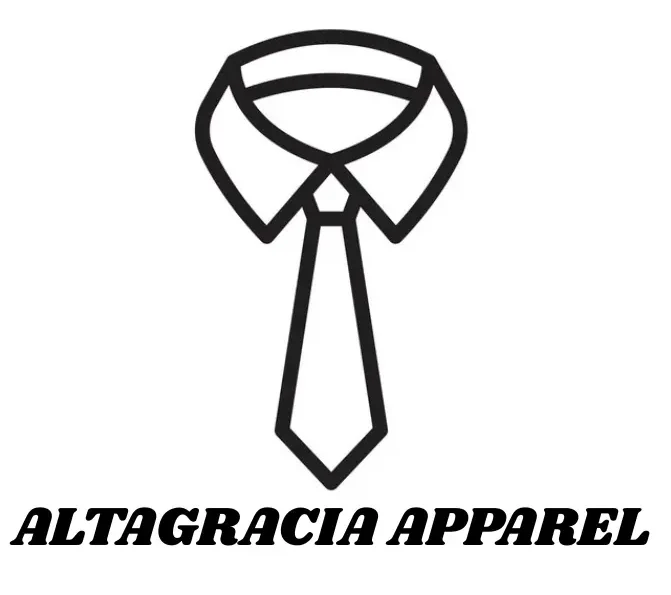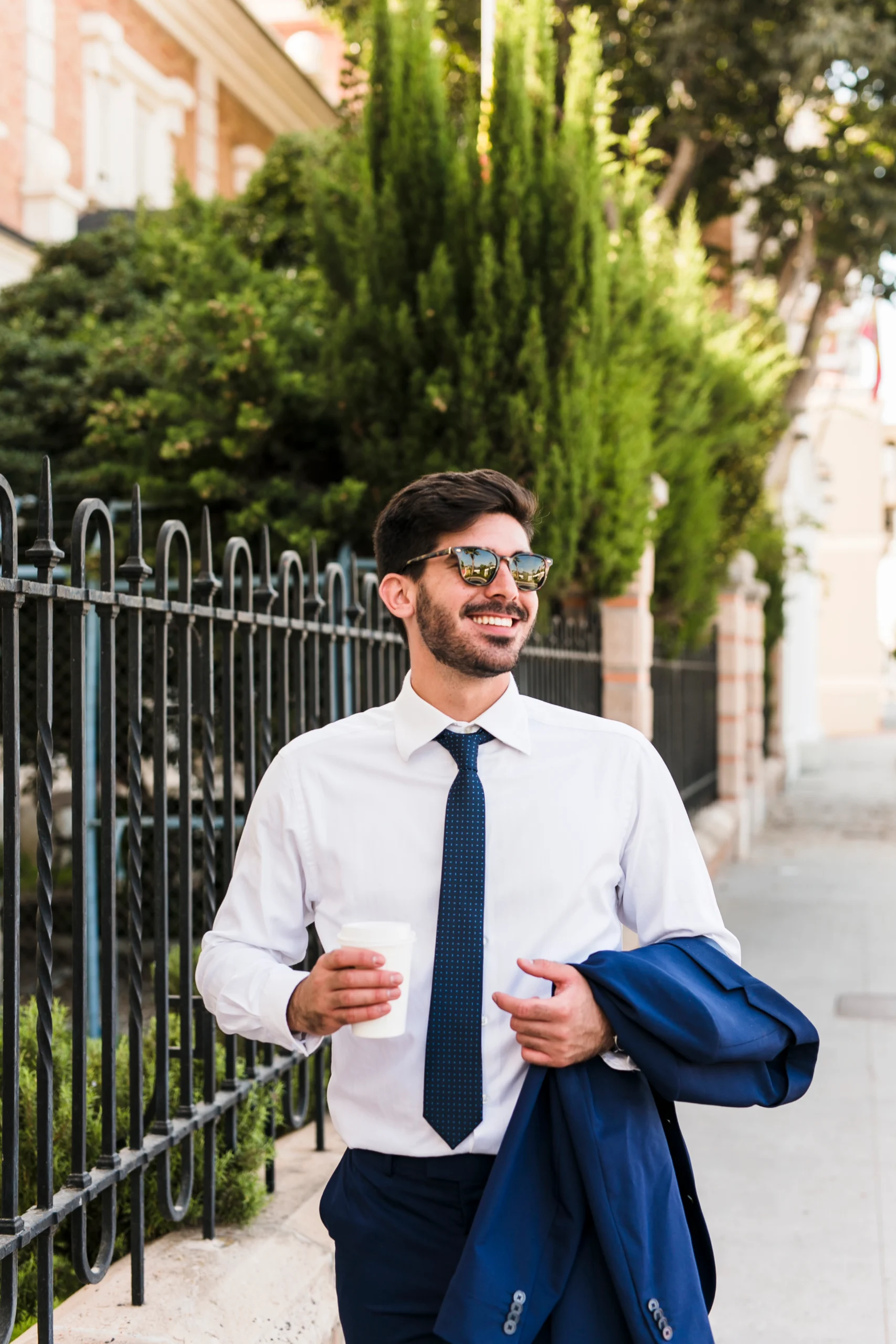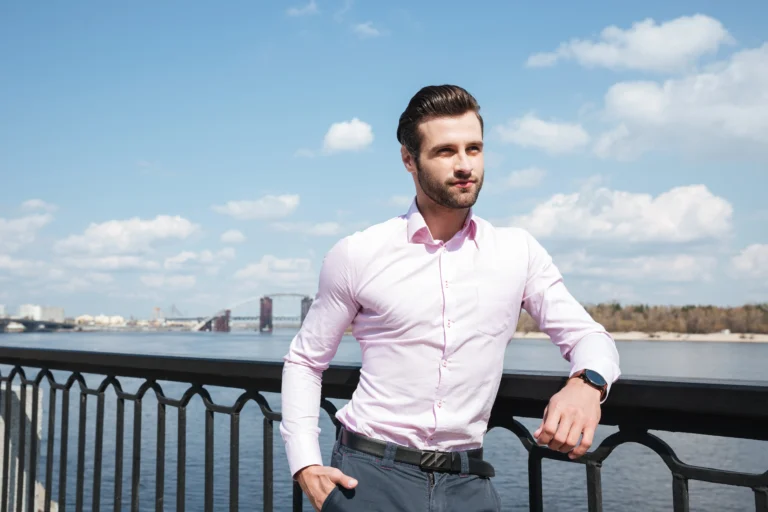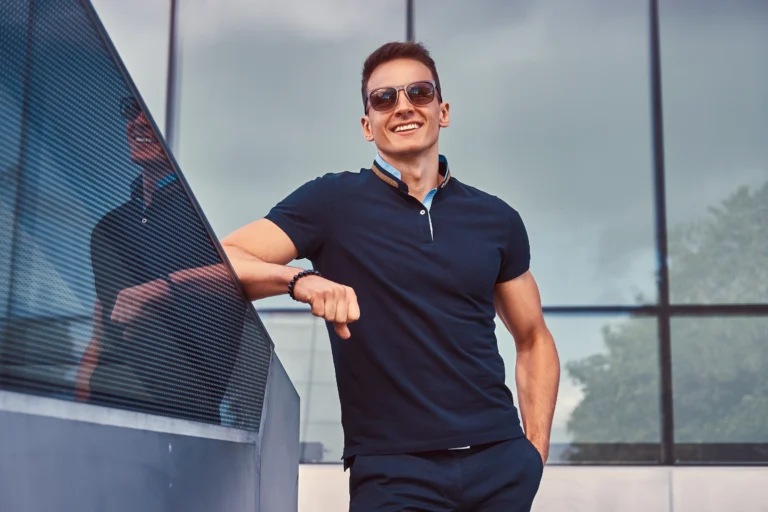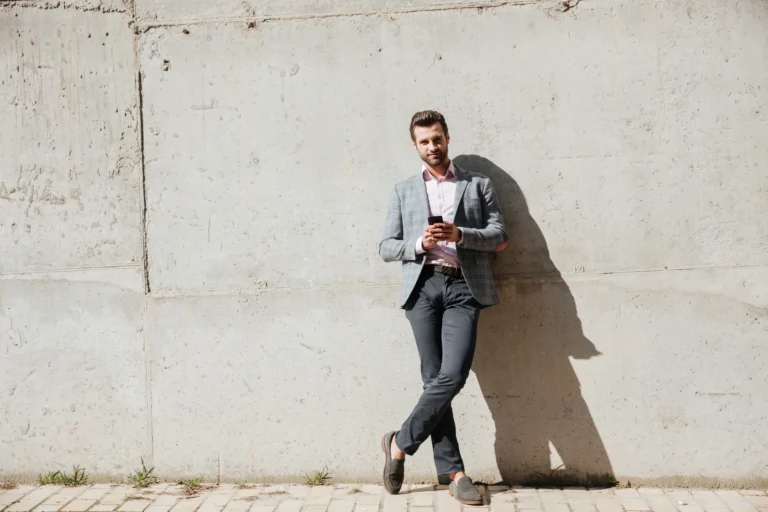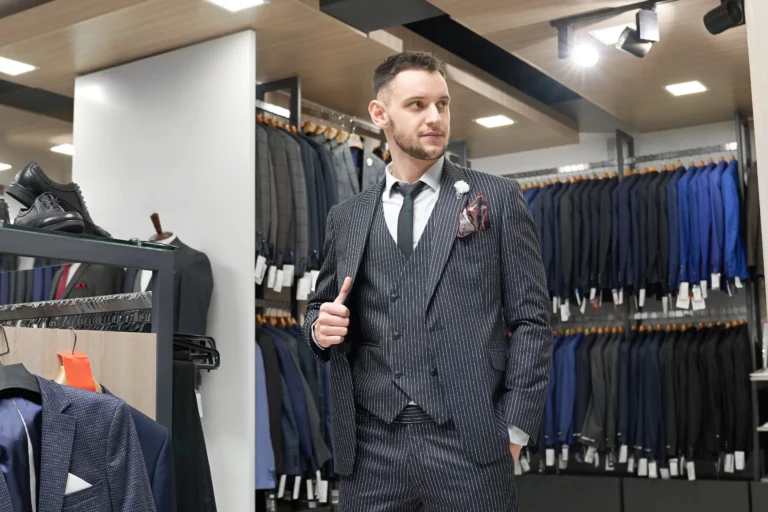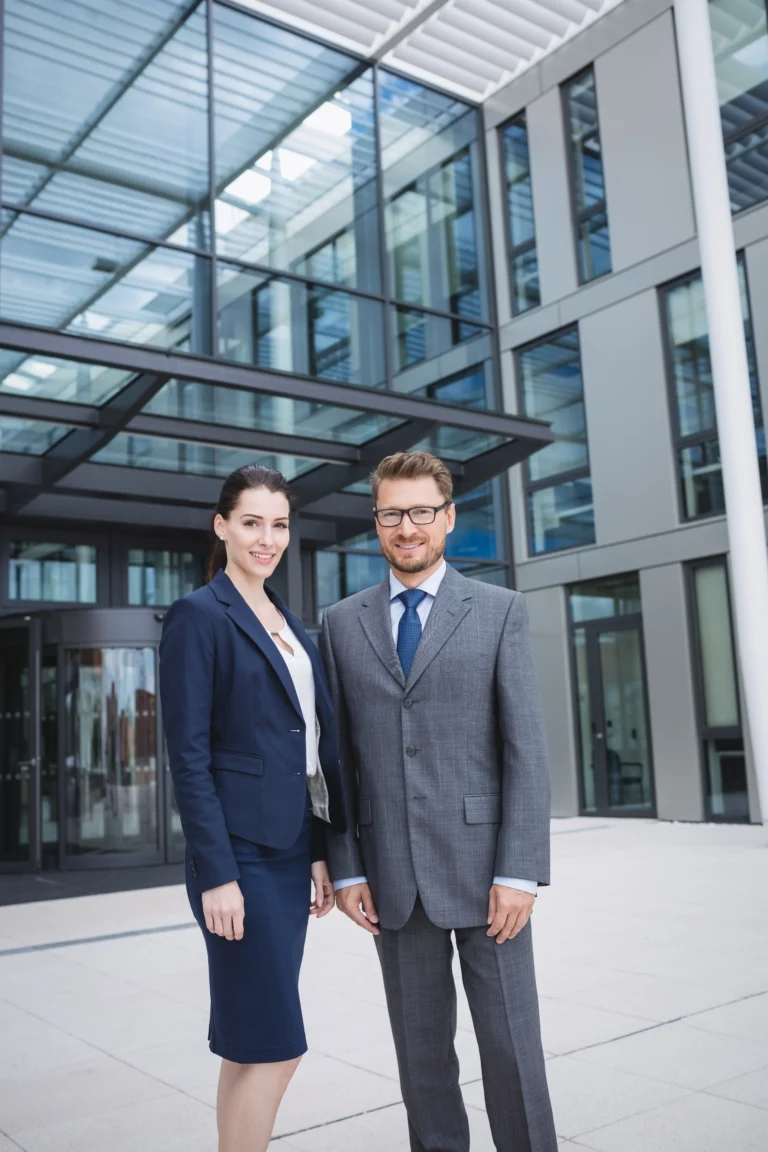Have you ever stood in front of your wardrobe, unsure whether your outfit says ready for work or ready for the weekend? You’re not the only one. Many men struggle to find that sweet spot between dressing too formally and looking too relaxed. The truth is, mastering business casual men style isn’t just about clothes it’s about confidence, comfort, and knowing how to balance the two.
The line between looking professional and looking overdressed can feel blurry, especially in today’s modern workplaces. Think of it as your roadmap to mastering that perfect in-between where comfort meets confidence, and style meets professionalism. No more guessing what’s appropriate or worrying if sneakers are too laid-back.
By the end of this guide, you’ll know exactly how to dress for any business-casual setting whether it’s the office, a meeting, or a casual Friday and how to build outfits that make you look sharp, feel comfortable, and leave a lasting impression. Because dressing well shouldn’t be confusing it should feel effortless.
What Does Business Casual Really Mean?
When we talk about “Business Casual,” what it really means is finding that perfect balance between professionalism and comfort. It’s not about wearing a full suit or showing up in jeans it’s about looking polished without feeling restricted. Business casual represents confidence through simplicity. It’s the modern way of saying, I’m serious about my work, but I know how to stay comfortable doing it. It allows room for personality and practicality you can look sharp in chinos and a crisp shirt while still feeling relaxed and approachable. So, business casual means being effortlessly professional smart, confident, and comfortable all at once.
What Is Business Casual?
Business casual is a style of dressing that strikes a balance between professional and relaxed attire. It allows individuals to present themselves in a polished manner without the need for a full suit or overly formal clothing. The emphasis is on clean, well-fitted pieces that convey professionalism while remaining comfortable and approachable. This dress code often includes items like chinos, dress slacks, button-up shirts, sweaters, and smart shoes, which can easily mix and match to create versatile outfits. While it limits very casual staples such as hoodies or sneakers, it opens the door to wardrobe essentials that can serve multiple purposes. The key is selecting pieces that reflect your personal style while staying appropriate for the workplace.
So, business casual men is about looking put-together without being stiff. It adapts to different industries, roles, and cultural norms, providing flexibility while maintaining a professional appearance. By focusing on subtle sophistication and comfort, you can create outfits that feel authentic and suitable for most professional settings.
What is Business Casual for Men?
Business casual for men is a dress code that balances professionalism with a relaxed approach. It allows men to present themselves neatly without the formality of a full suit and tie, creating a look that is both approachable and polished. The style can vary depending on industry standards and workplace culture, giving room for personal expression while maintaining respectability. Typically, this look includes well-fitted chinos or dress pants paired with a button-down shirt or polo. Accessories like a belt and clean, classic shoes such as loafers or oxfords complete the outfit. While blazers or sweaters can be added for a more polished appearance, they are optional depending on comfort and the setting.
The key is to aim for an appearance that is confident, tidy, and suitable for professional interaction. Neutral tones or simple patterns are preferred, while overly casual or worn-out clothing should be avoided. Ultimately, business casual men is about finding the right mix of comfort and sophistication that reflects both the wearer’s personality and professional environment.
Business Casual Men Examples
When it comes to business casual men attire, the goal is to look professional without the stiffness of a full suit. It’s that middle ground between comfort and confidence polished enough for meetings but relaxed enough for daily office life. Below are detailed examples of business casual men outfits can rely on throughout the week.
The Classic Office Look
- Outfit: Light blue dress shirt, navy chinos, brown leather belt, and loafers.
- Why it works: This timeless combo is clean, professional, and easy to pull together. The light blue shirt keeps things crisp, while navy chinos maintain a smart appearance without feeling overly formal. Brown leather shoes add warmth and refinement.
Smart Casual Friday
- Outfit: Polo shirt, khaki chinos, and clean white sneakers.
- Why it works: Ideal for a relaxed end to the week, this look keeps you comfortable while still presentable. Stick to structured polos in solid colors like navy, olive, or charcoal to maintain that professional edge.
Meeting Ready Look
- Outfit: Blazer, solid dress shirt, slim-fit trousers, and leather brogues.
- Why it works: Perfect for client meetings or presentations, this outfit balances professionalism with comfort. The blazer sharpens your overall look while the absence of a tie keeps it business casual men.
Minimalist Everyday Style
- Outfit: White oxford shirt, gray chinos, and desert boots.
- Why it works: Simple, timeless, and incredibly versatile. The monochrome palette gives a clean and modern impression, ideal for creative professionals or minimalists.
Smart Layered Look
- Outfit: Chambray shirt, lightweight cardigan, olive chinos, and brown boots.
- Why it works: Adds visual depth to your outfit without looking bulky. It’s an excellent choice for cooler months or casual office settings.
The Evolution of Business Casual
|
Era |
Key Development |
Impact on Workplace Style |
|---|---|---|
|
1960s–70s |
Casual Fridays and Hawaiian Aloha shirt movement introduced |
Employees allowed lighter, more relaxed clothing at work |
|
1980s |
Power dressing dominated but small shifts added personality |
Suits remained common but style became less rigid |
|
1990s |
Tech boom in Silicon Valley rejected traditional corporate attire |
Ties dropped, open collars, and sneakers became acceptable |
|
2000s–Today |
Hybrid workplaces, remote work, and cultural inclusivity reshaped dress codes |
Business casual men normalized across industries worldwide |
|
Modern Influence |
Social movements and focus on comfort, diversity, and personal expression |
Outfits blend professionalism with individuality |
Essential Business Casual Men Items
Business casual men essentials include well-fitted dress shirts, chinos, and tailored blazers that balance comfort with professionalism. Add classic leather shoes, a good belt, and a wristwatch for a refined touch. These key pieces form the foundation of a versatile wardrobe that works for most office settings.
Oxford Shirts
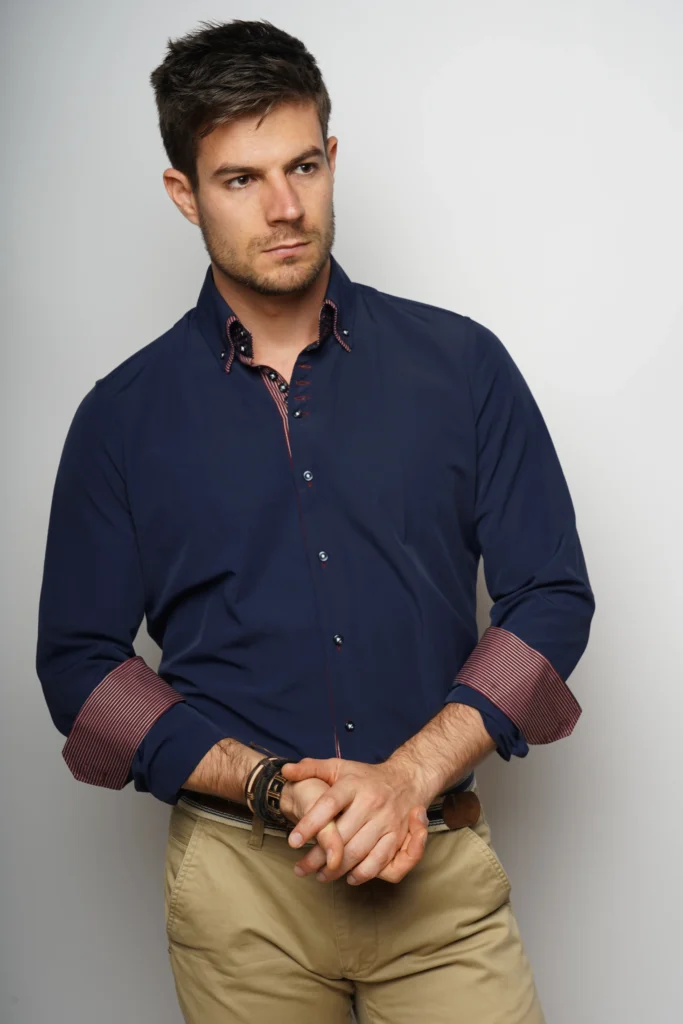
Oxford shirts are the cornerstone of a refined yet relaxed business casual men wardrobe. Their heavier cotton fabric gives structure and comfort, bridging the gap between formal dress shirts and casual button downs. They feature a soft collar that looks great with or without a tie, making them suitable for both meetings and after work settings. Begin with the basics white and light blue before branching into pastels, stripes, or subtle checks. To keep them crisp, iron or steam regularly and tuck them neatly into chinos or trousers.
Blazers & Sports Coats
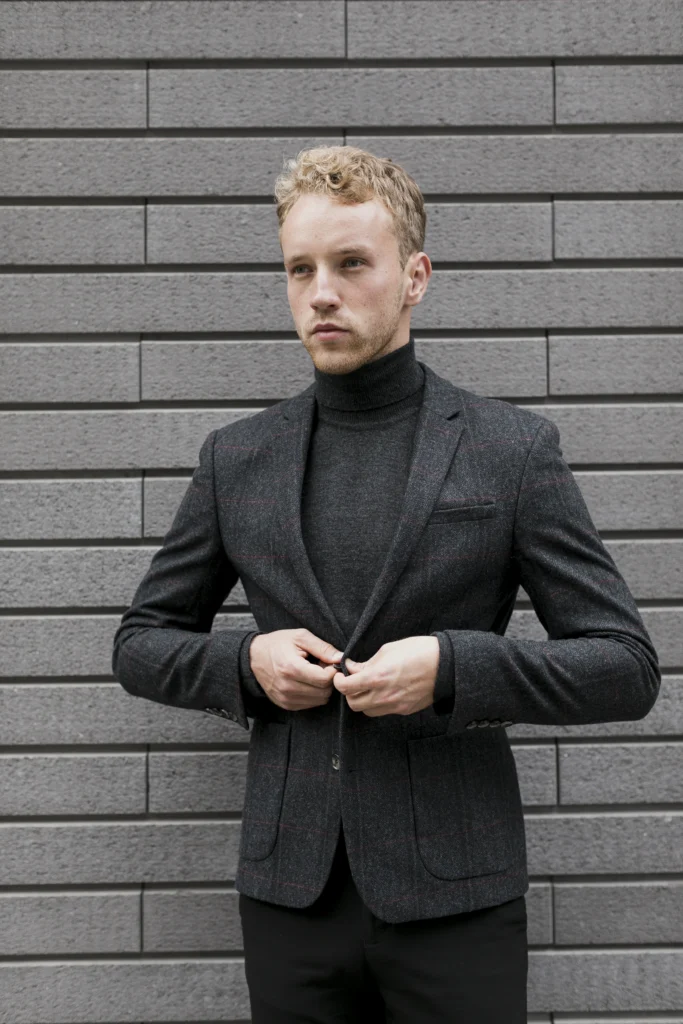
A blazer or sports coat is your secret weapon for instantly elevating your appearance. A tailored fit sharpens your look, enhances posture, and exudes confidence. Fabrics like wool or cotton blends offer comfort while maintaining structure. Navy, charcoal, and grey are versatile staples that complement most shirts and trousers. For variety, consider textured weaves or patterned options for smart casual days. Remember, fit is everything a blazer that hugs your shoulders perfectly transforms your overall style.
Sweaters
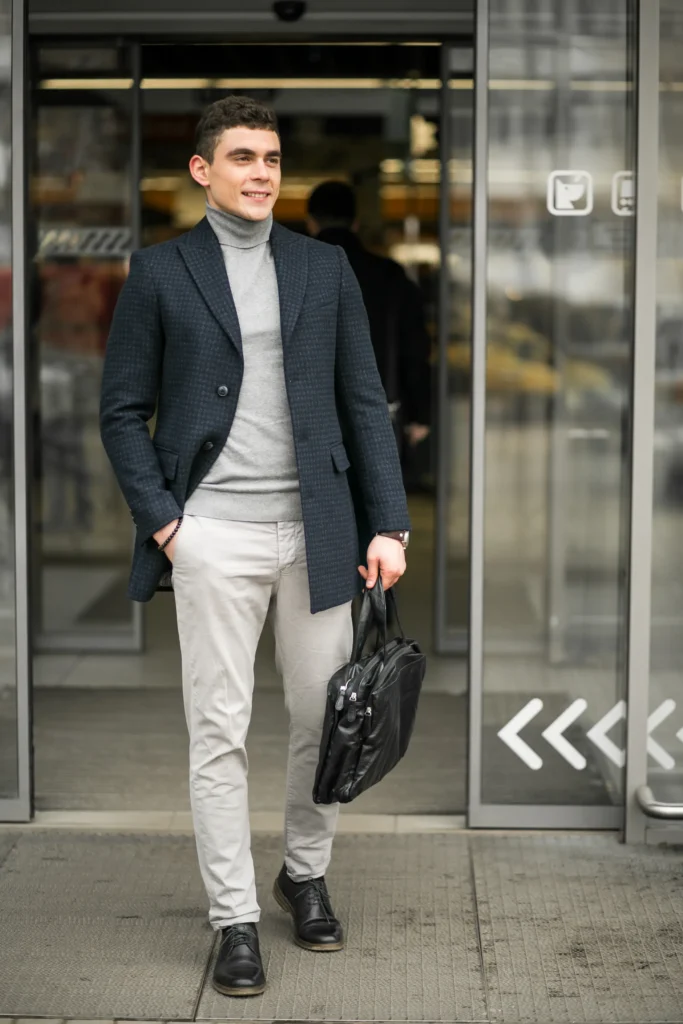
Sweaters are not only practical but also add an elegant layer to your outfit during colder months. Choose high quality knits like merino wool or cashmere for softness and breathability. Crewnecks offer a classic silhouette, while V necks pair beautifully with collared shirts. Stick to timeless shades such as navy, grey, or burgundy that coordinate well with your wardrobe. You can even layer them over dress shirts with rolled sleeves for a relaxed yet professional look.
Polo Shirts
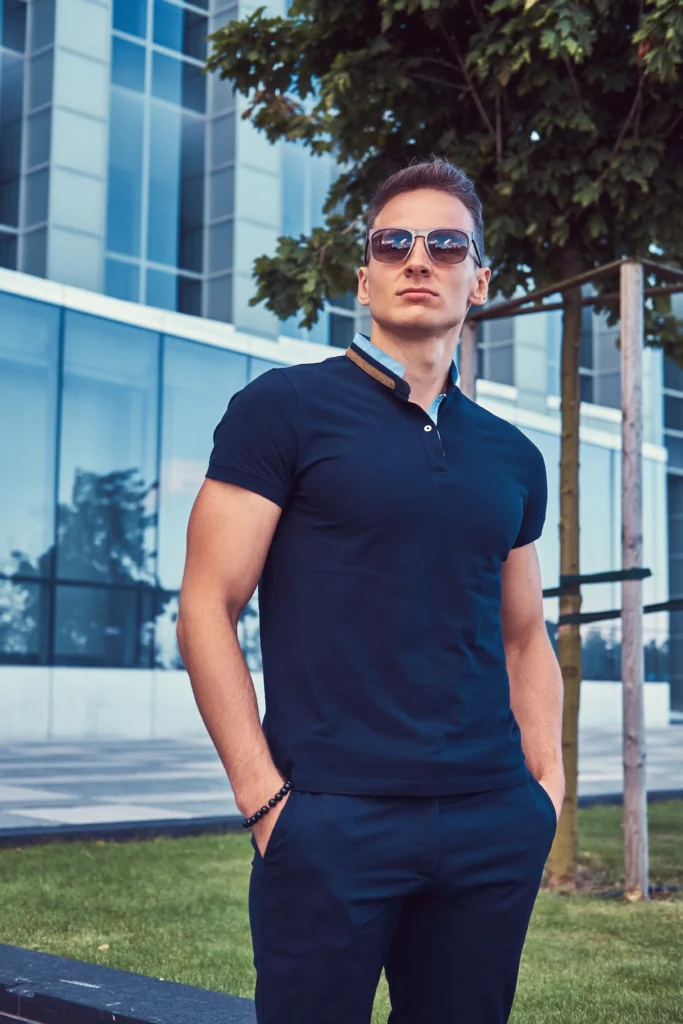
Polos combine comfort with understated sophistication, making them perfect for casual Fridays or warmer weather. Choose structured polos made of premium cotton or piqué fabric for durability and a polished finish. Neutral tones like navy, black, or white create a clean aesthetic, while subtle stripes or textures add personality. They work equally well with chinos or tailored jeans and can even sit neatly under a lightweight blazer for a modern, smart business casual men vibe.
Chinos
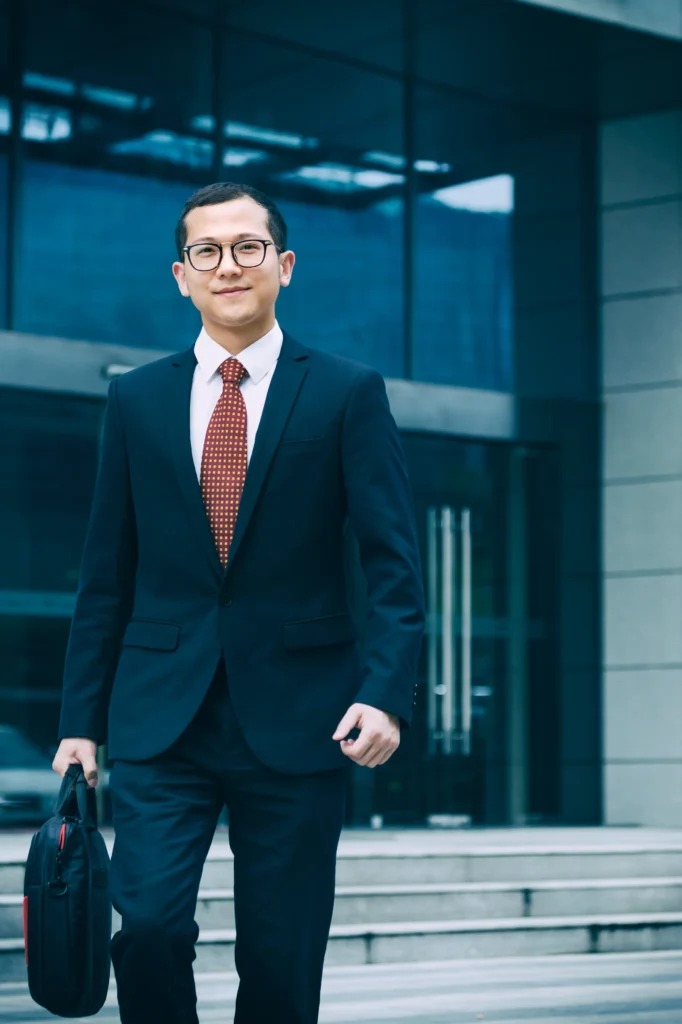
Chinos are the ultimate multitasker smart enough for meetings yet relaxed enough for everyday wear. Their soft cotton twill fabric keeps them comfortable throughout the day while maintaining a refined look. Go for slim or straight cuts in neutral tones such as beige, olive, grey, and navy. These colors mix easily with shirts, polos, and blazers alike. For added sharpness, make sure they’re well pressed and end just above your shoes for a tailored finish.
Dark-Wash Jeans
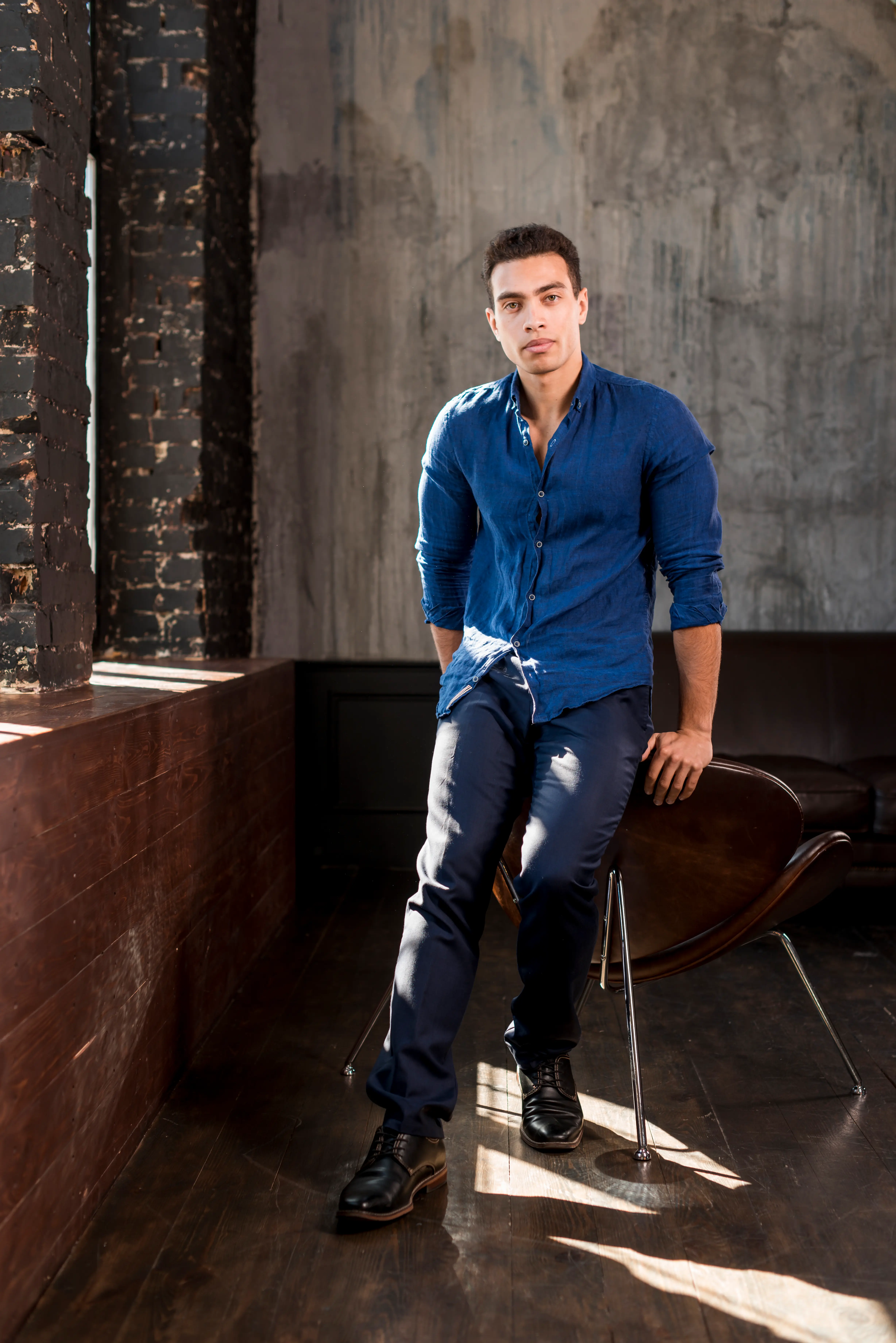
Dark-wash jeans are your go-to when you want to keep things relaxed without losing professionalism. Choose jeans with minimal fading, clean stitching, and a tailored fit no rips or embellishments. Pair them with an oxford shirt and loafers for a balanced business casual look. Dark indigo or black denim pairs seamlessly with blazers and button-downs, giving you a sophisticated off-duty edge that still fits workplace expectations.
Wool Trousers
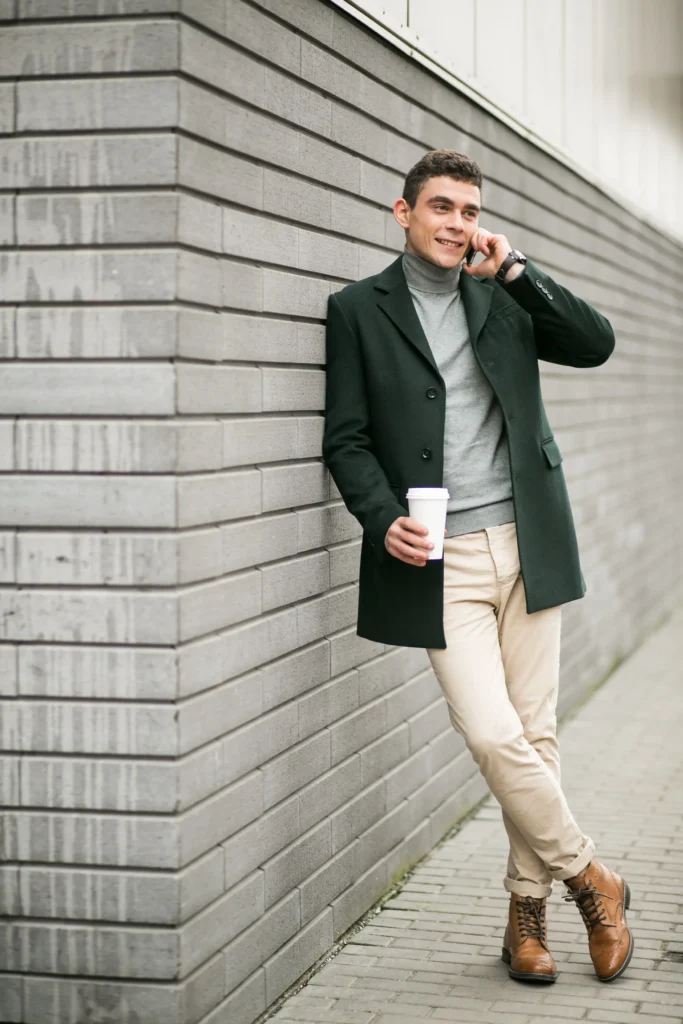
Wool trousers are perfect for cooler months and more formal business casual settings. Their refined texture and drape make them a sophisticated alternative to chinos. opt for shades like charcoal, navy, or light grey, which coordinate effortlessly with most shirts and blazers. When tailored properly, they elongate your frame and create a polished silhouette. Combine them with leather shoes and a crisp shirt for a timeless, executive-ready outfit.
Dress Shirt
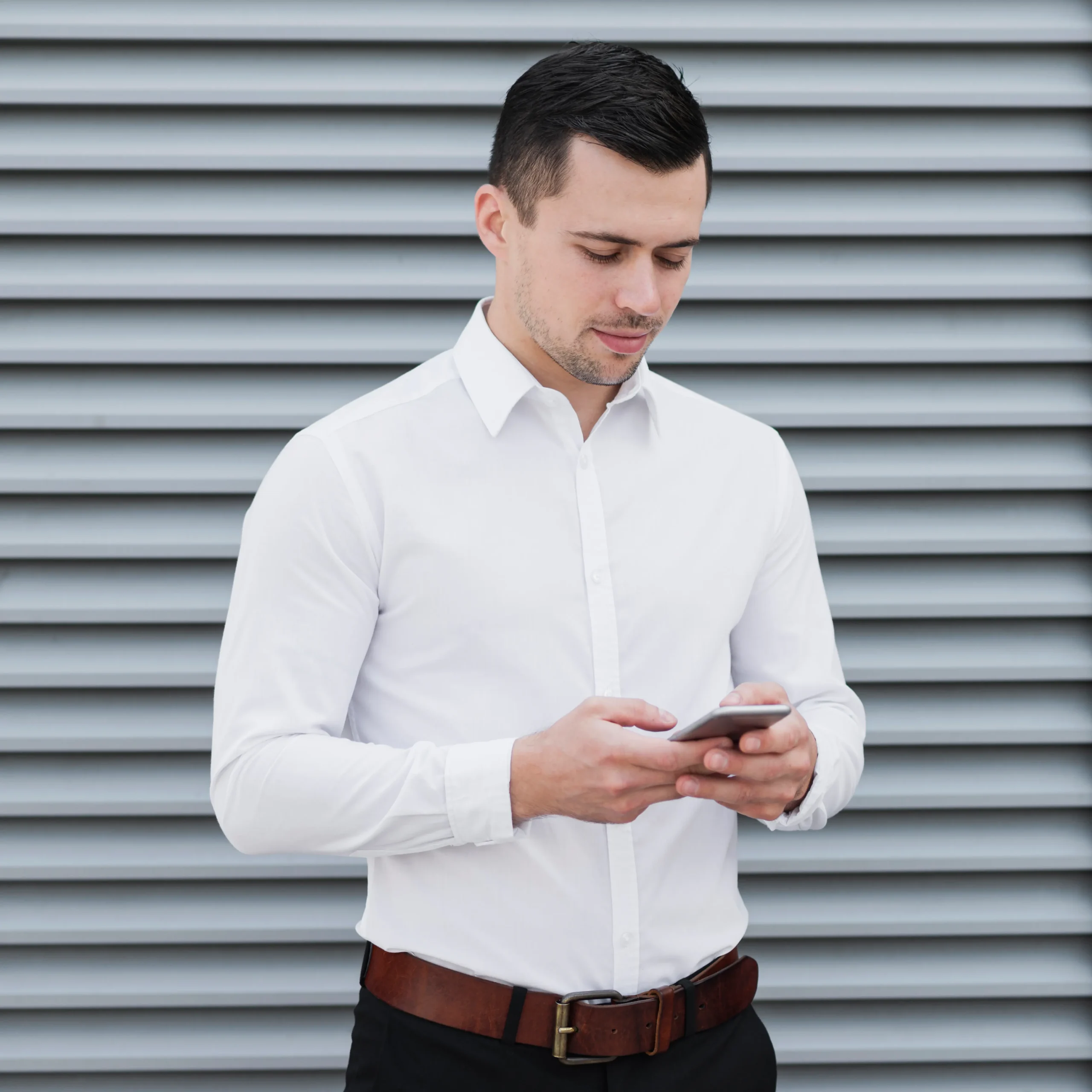
Dress shirts serve as the foundation of business casual men dressing. High quality cotton ensures comfort and breathability, while proper tailoring keeps you looking sharp. Stick to versatile colors such as white, pale blue, or soft patterns like pinstripes and gingham. Pay attention to details like collar stiffness and cuff style for added refinement. For a modern approach, wear them tucked into chinos or trousers with rolled sleeves for effortless charm.
Trousers & Chinos
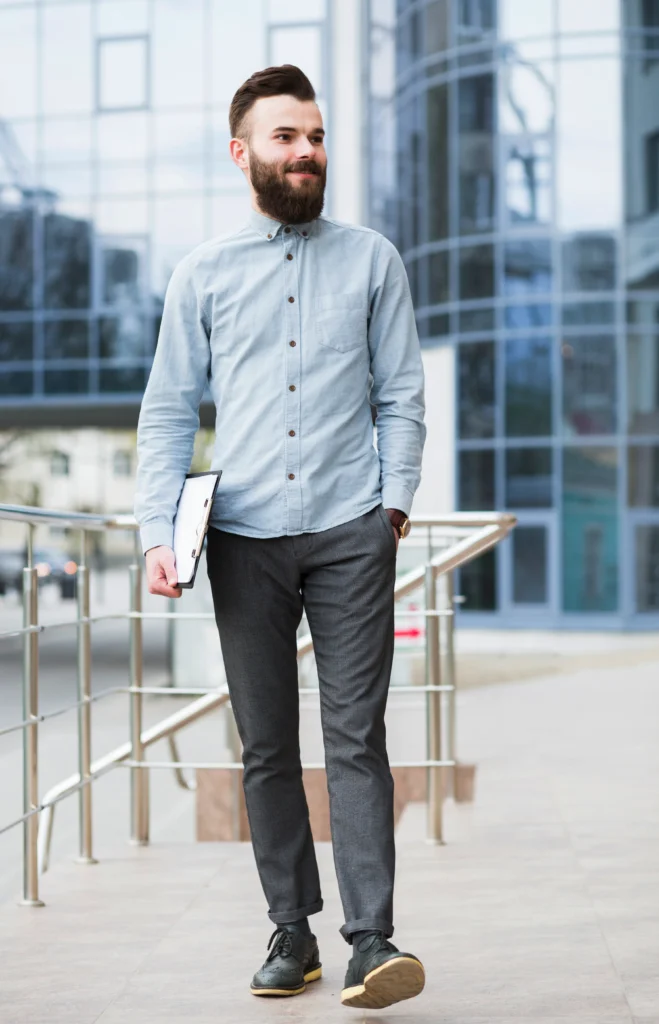
Investing in premium trousers or chinos is a step toward building a long-lasting wardrobe. Look for fine cotton or wool blends that maintain structure and resist wrinkles. Tailored cuts enhance comfort and appearance, ensuring you always look put-together. Neutral tones navy, khaki, stone, or grey offer flexibility across seasons and pair well with shirts, sweaters, and blazers. When cared for properly, these pieces can serve you for years without losing their form.
Leather Shoes
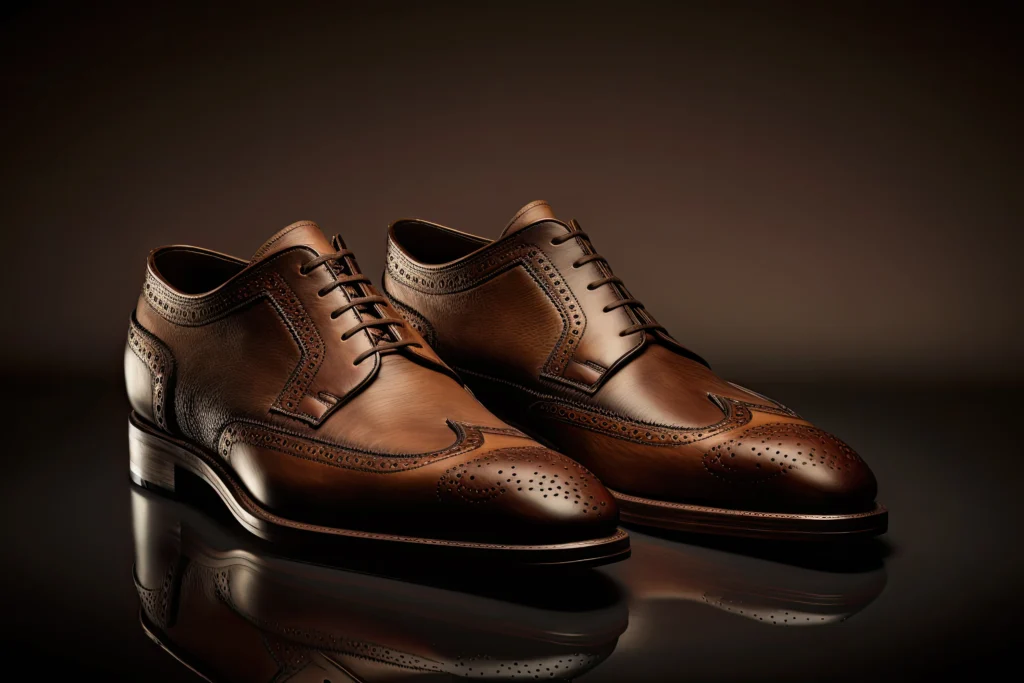
Leather shoes are the foundation of every professional outfit. Classics like oxfords, derbies, or loafers effortlessly bridge the gap between formal and casual. Black pairs add a touch of sophistication, while brown or tan shades offer warmth and versatility. Regular polishing keeps them looking sharp and extends their life. Match your shoes with your belt for a cohesive, thoughtful finish that instantly elevates your entire ensemble.
Accessories

Accessories are where your personal style subtly shines. A sleek leather belt, a minimalist watch, or a pocket square can refine your outfit without overdoing it. Stick to timeless metals like silver or gold and avoid flashy designs in corporate settings. A simple leather strap watch signals taste and attention to detail. Accessories complete your look and show that you understand the balance between fashion and professionalism.
The Differences Between Business Casual and Other Dress Codes
Business casual men differ from other dress codes mainly in formality and flexibility. Unlike formal business wear that demands suits and ties, or casual wear that prioritizes comfort with jeans and T-shirts, business casual blends the two. It keeps a professional, polished look while allowing more comfort and personal style, making it the perfect middle ground for modern workplaces.
Business Casual vs. Business Formal
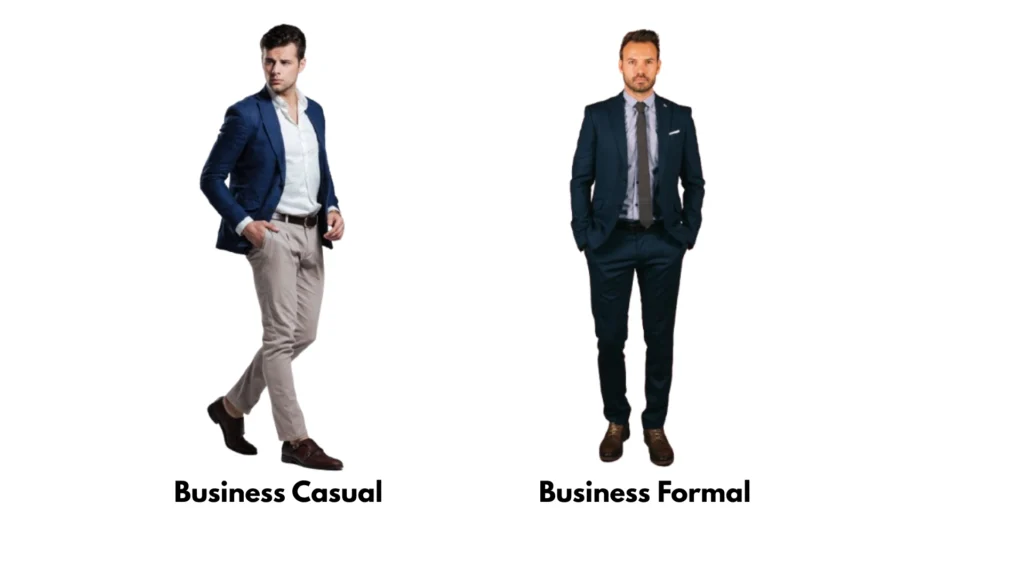
|
Category |
Business Casual |
Business Formal |
|---|---|---|
|
Overall Style |
Relaxed yet professional allows personality and flexibility in colors and patterns. |
Strictly polished and structured emphasizes authority and sophistication. |
|
Occasions |
Everyday work, creative industries, business casual men meetings with clients. |
Job interviews, high-level presentations, board meetings, corporate dinners. |
|
Suits & Jackets |
Full suit not required separates like slacks with blazers are common. |
Full, well-tailored suit in dark shades such as black, navy, charcoal. |
|
Shirts |
Button-down shirts in light colors or subtle patterns neatly pressed. |
Crisp white or light-colored dress shirt with a pointed collar. |
|
Ties |
Optional often skipped for a more relaxed tone. |
Mandatory silk in solid colors or subtle patterns. |
|
Footwear |
Dress shoes like loafers, Oxfords, or Derby shoes sneakers avoided unless allowed. |
Polished leather Oxfords or Derbys free from scuffs, always formal. |
|
Accessories |
Minimal belt matching shoes, optional pocket squares, subtle jewelry. |
Conservative belt matching shoes, pocket square, cufflinks for refinement. |
|
Layers |
Sweaters, vests, or cardigans can be added for comfort and versatility. |
Typically no business casual men layering jacket and tie remain essential. |
|
Workplace Fit |
Suited for modern offices that encourage flexibility and comfort. |
Required in traditional or highly professional corporate settings. |
|
Key Focus |
Conveys adaptability, confidence, and ease. |
Projects authority, discipline, and professionalism. |
Business Casual vs. Smart Casual
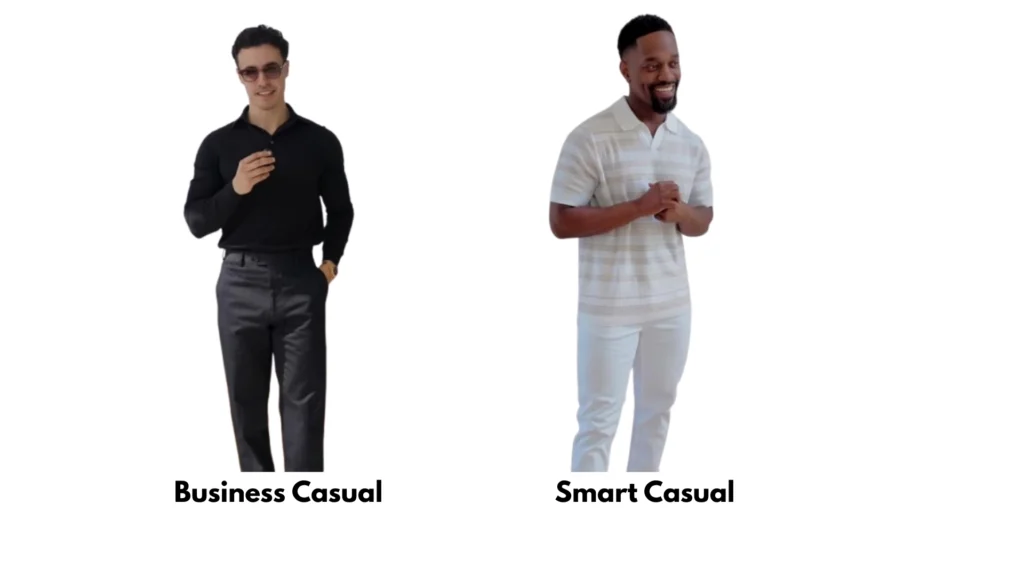
|
Category |
Business Casual |
Smart Casual |
|---|---|---|
|
Overall Style |
Polished, office-ready with restrained elegance |
Relaxed, stylish, and adaptable to social settings |
|
Tops |
Dark or muted jackets, plain shirts like blue, white, or subtle tones, no T-shirts |
Bright/light jackets, pullovers, patterned or colorful shirts, plain T-shirts allowed under jackets |
|
Bottoms |
Dark jeans or muted chinos, tailored fit, no shorts or ripped styles |
Jeans such as dark or light, colorful chinos, seasonal shades, still no ripped jeans or shorts |
|
Shoes |
Leather shoes in brown or black, formal in appearance |
Leather or suede shoes, boots, sometimes clean fashion sneakers, no trainers |
|
Accessories |
Minimal approach belt matches trousers, subtle pocket square, classic watch |
Creative freedom contrasting belts, colorful pocket squares, discreet wristbands, stylish sunglasses |
|
Color Palette |
Muted, darker shades such as navy, grey, brown, sage avoid bright hues |
More freedom with brighter or lighter tones up to three colors with one bold accent |
|
Occasions |
Semi-formal meetings, office Fridays, professional but relaxed workdays |
Parties, date nights, business dinners, creative industry meetups, casual yet stylish gatherings |
|
Formality Balance |
Slightly less strict than full business causal men wear but still professional |
Blends formality with individuality, fashion-forward, and expressive |
|
Key Focus |
Conservative presentation and elegance without a tie |
Personality, contrast, and playful use of color, texture, and accessories |
Business Casual Men vs. Casual or Semi-Formal
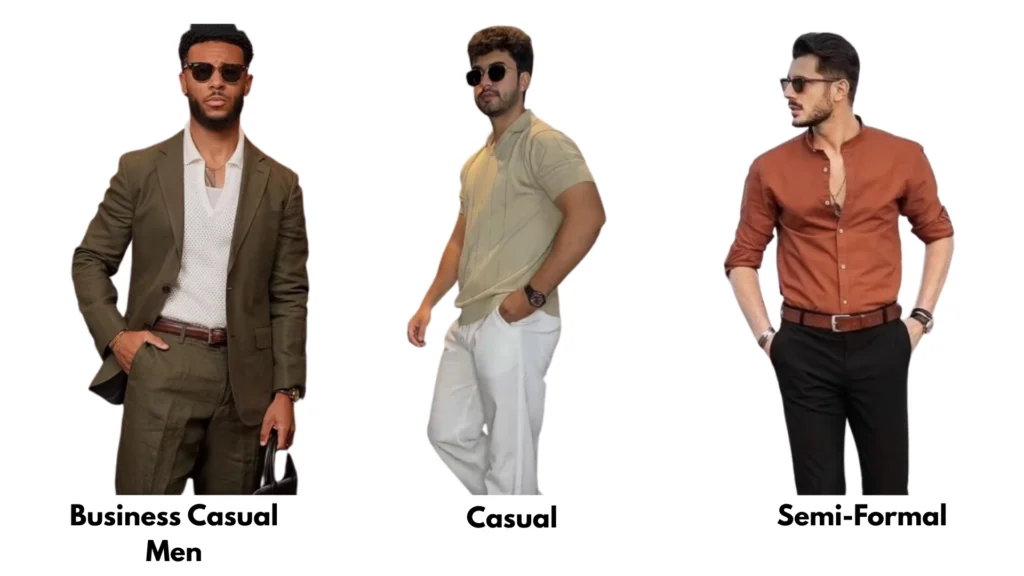
|
Category |
Business Casual |
Casual |
Semi-Formal |
|---|---|---|---|
|
Overall Style |
Midpoint between casual and semi-formal blends comfort with professionalism |
Relaxed and everyday informal pieces with no dress code |
Polished but not overly rigid lighter suits or blazers with chinos |
|
Tops |
Collared shirts, polos, light sweaters, optional blazers |
T-shirts, polos, sweatshirts |
Crisp cotton shirts tie optional textures like flannel or linen allowed |
|
Jackets |
Blazers or sport coats in softer fabrics |
None required |
Unstructured or lightly structured jackets lighter fabrics |
|
Bottoms |
Chinos, dark jeans in some settings, tailored trousers |
Shorts, jeans, joggers |
Chinos, wool-blend trousers, or mismatched suit pants |
|
Footwear |
Leather loafers, brogues, derbies, clean sneakers in modern offices |
Flip-flops, sneakers, sandals |
Leather loafers, monk straps, polished derbies |
|
Colors |
Neutral or muted tones subtle checks or textures |
Any color or pattern unrestricted |
Muted tones like navy, olive, grey textures or small patterns acceptable |
|
Accessories |
Minimal watch, belt, simple pocket square |
None required |
Simple additions like pocket square or leather belt |
|
Occasions |
Daily office wear, meetings, casual client interactions |
Leisure, weekend, off-duty |
Cocktail parties, work dinners, art events, family gatherings |
|
Shopping Tips |
Choose versatile pieces like chinos and unstructured blazers |
Comfort-driven choices, little concern for fit |
Go for lightweight jackets, soft fabrics, subtle patterns |
Seasonal Business Casual Men
When it comes to dressing business casual men, one size definitely doesn’t fit all especially when the seasons change. The right outfit not only depends on your office environment but also on the weather outside. Knowing how to dress smartly through different seasons keeps you looking sharp and comfortable all year round. Let’s break it down season by season.
Summer Business Casual for Men
Summer is all about staying cool while still looking professional. The goal is to balance comfort with class.
- Fabrics:
Choose light and breathable materials like cotton, linen, and lightweight blends. These help your skin breathe and prevent that sweaty, clingy feeling. - Shirts:
Go for crisp button-down shirts or polos in lighter shades think white, light blue, soft pink, or beige. Short-sleeve shirts can work too, as long as they’re well fitted and neat. - Trousers:
Chinos are your best friend in the heat. Opt for khaki, stone, or navy colors. Avoid dark or heavy fabrics that trap heat. - Blazers:
If your workplace requires a blazer, pick an unlined or linen one. It adds structure without making you feel like you’re melting. - Shoes:
Loafers or suede derbies look perfect for summer. If allowed, you can even wear clean, minimalist leather sneakers for a modern touch. - Style Tip:
Roll up your sleeves, skip the tie, and keep your look fresh and airy. Simplicity goes a long way in summer business casual men.
Fall Business Casual for Men
As temperatures drop, your business casual men wardrobe should shift toward layering and richer tones.
- Fabrics:
This is the time to bring out heavier cotton, light wool, and blends that keep you warm without being too bulky. - Colors:
Earth tones work beautifully think olive, burgundy, navy, and brown. These shades instantly give your outfit a refined, autumn-ready vibe. - Layering:
Add a fine-knit sweater or cardigan over your shirt. You can also pair a tweed or wool-blend blazer for an effortlessly polished look. - Shoes:
Leather loafers or brogues pair well with chinos or dark trousers. Swap lighter summer shoes for something sturdier. - Style Tip:
Layer smartly not too heavy, not too thin. A light scarf or structured jacket can elevate your overall outfit.
Winter Business Casual for Men
Winter calls for warmth without losing that sharp edge. Business casual men in cold months is all about layering and texture.
- Fabrics:
Wool, flannel, and thicker cotton blends are essential. They keep you warm while maintaining a professional appearance. - Shirts & Sweaters:
Stick with long-sleeve shirts and layer them under v-neck sweaters or knit pullovers. A blazer or wool coat on top completes the look. - Colors:
Deep and dark tones like charcoal, navy, and forest green work best in winter. They look professional and suit the season. - Shoes:
Opt for leather boots or classic lace up shoes that are weather appropriate but still office appropriate. - Style Tip:
Don’t underestimate accessories a structured overcoat, scarf, and gloves can make your outfit look sleek and intentional.
Spring Business Casual for Men
Spring is the season of freshness it’s time to lighten up your wardrobe again with softer tones and breathable fabrics.
- Fabrics:
Transition back to lighter materials like cotton and blends. It’s still smart to keep a light jacket or blazer handy for chilly mornings. - Colors:
Experiment with pastel shirts or subtle patterns. Shades of light blue, mint, or beige pair beautifully with neutral trousers. - Layering:
A casual blazer or light cardigan works perfectly for unpredictable spring weather. - Shoes:
Loafers, oxfords, or suede shoes fit well. Keep them clean and pair them with ankle-length trousers for a neat look. - Style Tip:
Mix structure with ease the goal is to look effortless but still put together.
How to Dress Business Casual Men by Occasion
Mastering business casual men isn’t just about knowing what to wear it’s about knowing when and where to wear it. The way you dress for a regular day at the office won’t be the same as how you show up for a conference, interview, or business dinner. Every occasion has its own vibe, and your outfit should fit right in while still showing your personal style.
For the Office
When it comes to your everyday office look, the goal is to strike a balance between professional and comfortable. You want to look polished without feeling overdressed or restricted.
What to Wear:
- Bottoms: Well-fitted chinos or dress pants in classic neutrals like navy, grey, beige, or even olive. Avoid skinny fits a slim or straight cut is more timeless.
- Tops: A crisp button-down shirt in white, light blue, or pastel tones. On casual days, a structured polo works too.
- Layers: Keep a lightweight blazer, cardigan, or fine-knit sweater handy for layering it adds dimension to your outfit.
- Footwear: Leather loafers, derbies, or clean minimal sneakers if your office allows them. Keep them polished and simple.
- Accessories: A sleek leather belt that matches your shoes, and a minimal wristwatch to pull it all together.
If you’re new to the job, start a little more formal until you understand the office culture. You can always dress down later once you know what’s acceptable.
For Business Casual Men Meetings
Meeting clients or higher ups is your moment to make a statement. Your outfit should communicate competence, confidence, and attention to detail without looking like you’re trying too hard.
What to Wear:
- Top: A tailored dress shirt, preferably solid or subtly patterned. Add a blazer or sport coat for that structured look.
- Bottoms: Dress trousers or chinos in dark tones like charcoal, navy, or taupe these look refined yet approachable.
- Shoes: Polished loafers or oxfords work best. Avoid sneakers entirely.
- Accessories: A matching belt, neat grooming, and subtle cologne are small details that make a big impression.
Avoid loud colors or busy patterns. Keep it sharp, minimal, and confident you want your outfit to say professional, not trying too hard.
For Conferences
These events are where you make connections and first impressions count. You’ll be meeting people from different companies and industries, so a little effort goes a long way.
What to Wear:
- Top: A button-up shirt like light tones like white, sky blue, or pale pink work great during daytime events.
- Layer: A blazer or sport coat adds instant polish and structure.
- Bottoms: Tailored chinos or trousers, preferably in neutral shades.
- Shoes: Go for dress shoes or brogues. Skip sneakers unless the event is clearly informal.
Stick with wrinkle-free, breathable fabrics you’ll be standing and mingling a lot. Comfort and style equals to confidence.
For Business Dinners
Evening events call for a slightly elevated look think smart, sleek, and dinner appropriate. Your goal is to blend professionalism with after-hours charm.
What to Wear:
- Bottoms: Dark chinos or tailored dress pants in navy, charcoal, or black.
- Top: A button up shirt in a richer tone like navy, burgundy, forest green, or charcoal always look great under dim lighting.
- Layer: A blazer or light jacket completes the refined look.
- Shoes: Leather loafers or Chelsea boots both are timeless evening choices.
- Extras: A minimal belt and a touch of fragrance finish things perfectly.
If it’s a formal dinner, skip jeans or sneakers entirely. You can never go wrong being slightly overdressed at a dinner table..
For Job Interviews
First impressions matter before you even speak, your outfit is already saying something. The goal for interviews is to look capable, confident, and approachable. Business casual men here should lean toward professional.
What to Wear:
- Top: A clean, well-pressed dress shirt such as light blue or white are unbeatable classics.
- Bottoms: Tailored chinos or trousers in navy or grey for a safe, refined base.
- Layer: A blazer or sport coat is optional but recommended it instantly upgrades your presence.
- Shoes: Stick with closed-toe leather shoes no sneakers.
- Accessories: Keep it minimal a neat watch, trimmed grooming, and neutral fragrance.
Research the company’s culture. Startups might accept jeans and sneakers, but traditional firms expect dress pants and leather shoes.
Rules for Business Casual
Business casual men is about finding that sweet spot between relaxed and professional. It’s not just about wearing the right clothes but wearing them with confidence and purpose. These rules will help you understand how to mix comfort with polish, so you always look put-together, no matter the work setting.
- Understand Your Office Culture
Every workplace has its own style standards, even if they aren’t spelled out. Paying attention to how colleagues dress helps you know whether a blazer is expected or if simple shirts are acceptable. Blending in while showing personal flair ensures you look appropriate yet confident. - Start with a Button-Up
A classic button-up shirt is the most reliable base for business casual men outfits. Neutral shades and subtle patterns make mixing and matching easier. The right fit sharpens your look and keeps you versatile for both relaxed and more formal moments. - Polos Can Work, But Be Cautious
Polos are suitable when chosen in muted colors and tailored cuts. They give a relaxed feel while still looking professional if paired with smart trousers. Avoid oversized logos or loud prints to maintain a polished appearance. - Henleys and Tees Are Too Casual
Casual tops like tees and Henleys lack the structure needed in a workplace setting. Even when layered with jackets, they rarely meet the standard of professional attire. Sticking to shirts or polos ensures a more refined impression. - Pick the Right Pants
Well-fitted chinos or slacks are essential for striking the business casual balance. Neutral shades like navy or grey pair easily with different tops. Choosing quality fabrics keeps your outfit comfortable and sharp throughout the day. - Add a Blazer
A blazer instantly elevates even the simplest outfit, giving structure and polish. Neutral tones maximize flexibility, allowing you to wear them across many combinations. Proper fit at the shoulders and waist makes all the difference. - Say No to Shorts
Shorts rarely align with professional standards, no matter how tailored. Lightweight trousers in breathable fabrics are a smarter warm-weather choice. Save shorts for off-duty occasions where formality isn’t expected. - Consider Richer Fabrics
Choosing materials like linen, corduroy, or wool enhances both style and comfort. Seasonal fabrics keep your wardrobe adaptable for hot or cold months. Texture and quality give outfits more depth and sophistication. - Big and Tall Guide
Men with larger frames should aim for tailored fits that flatter rather than overwhelm. Structured shirts and blazers define shape without adding bulk. Custom options provide confidence and comfort in any office setting. - Jeans in Business Casual? Sometimes
Dark, plain jeans can work if styled thoughtfully with formal pieces. Pairing them with smart shirts, blazers, or leather shoes keeps the look professional. Avoid distressed or overly casual styles to maintain credibility. - Khakis: A Business Casual Men Staple
Khakis bridge comfort and professionalism, making them highly versatile. Neutral tones blend easily with a range of tops and layers. Tailored cuts give them a modern, office-appropriate edge. - Layer Smartly
Adding sweaters, cardigans, or turtlenecks creates depth and adaptability. Each layer should complement in color and fit to avoid bulkiness. Smart layering helps transition smoothly through changing seasons. - Go Creative with Smart Combinations
Mixing pieces like blazers with polos or sweaters with chinos refreshes your look. Playing with textures and seasonal fabrics keeps outfits interesting. Creativity within professional limits highlights personal style. - Turtlenecks Are a Stylish Choice
A slim turtleneck offers a sleek alternative to traditional shirts. Neutral colors paired with blazers or slacks give a refined, modern vibe. This option works especially well in cooler weather. - Accessorize Smart
Subtle accessories add character without overshadowing your outfit. Classic watches, simple belts, and coordinated footwear refine the look. The right details show attention to polish and personal taste. - Go Custom Fit
Tailored clothing ensures comfort and eliminates awkward fits. Custom pieces adapt to your proportions, enhancing both style and ease. Investing in this option pays off with long-lasting wear and confidence. - Add a Personal Touch
Small details like a pop of color, texture, or a unique accessory set you apart. Balancing individuality with professionalism makes your wardrobe memorable. Customized choices keep your style authentic. - Stay Well Groomed
Presentation goes beyond clothing neat grooming completes the impression. Clean haircuts, tidy beards, and subtle fragrance enhance your overall look. Attention to personal care reinforces professionalism in every interaction.
Extra Business Casual Men Do and Don’t to Make Your Outfit Work
Even the best outfit can miss the mark if you overlook the small details. These extra do’s and don’ts will help you fine-tune your business casual men look and make sure every piece works together effortlessly.
Business Casual Men Do’s
- Do focus on fit
No matter how expensive your outfit is, poor fit will ruin the entire look. A shirt that hugs too tightly or pants that pool at your ankles sends the wrong message. Tailoring ensures even casual pieces look sharp and intentional. - Do observe your workplace
Every office has its own standard for business casual. Take cues from colleagues and managers to understand whether jeans, chinos, or blazers are the norm. If unsure, asking HR or a senior teammate can save you from standing out for the wrong reasons. - Do elevate Business casual men pieces
Think of business casual as softening professional attire, not replacing it with weekend wear. Swap formal trousers for chinos or corduroys, or pair a collared shirt with a knit blazer. The goal is to balance comfort while keeping a polished edge. - Do keep clothes fresh and pressed
Wrinkles and stains instantly downgrade your style, no matter how well-dressed you are. Always ensure your outfit is clean, crisp, and ready to wear. Small grooming details speak volumes about professionalism. - Do stick with timeless staples
Certain outfit formulas never fail, like tailored pants with a button-down and loafers. Neutral colors and quality fabrics build a reliable base for your wardrobe. From there, you can rotate seasonal pieces for variety.
Business Casual Men Don’ts
- Don’t go too casual
Business casual isn’t an excuse to wear athletic wear or lounge clothes. Hoodies, distressed jeans, and graphic tees may work for weekends, but they rarely suit the office. When in doubt, lean toward professional rather than overly relaxed. - Don’t overdo boldness
Loud prints, flashy accessories, or multiple statement pieces compete for attention. A patterned shirt can work, but balance it with muted pants or shoes. Subtle touches of personality always read better than a costume-like approach. - Don’t rely on sneakers
While some creative offices may allow them, sneakers generally undermine the professional tone. Instead, polished loafers, Oxfords, or brogues complete the look while maintaining versatility. Keeping both black and brown pairs covers nearly all occasions. - Don’t mismatch your outfit
Pairing items that belong in different categories like gym shoes with dress pants creates confusion. Business casual men thrives on harmony between pieces. If you’re experimenting, check your reflection or get feedback before committing. - Don’t fear controlled variety
Playing it safe every day can feel monotonous, but going wild with colors or fabrics isn’t the answer either. Add a knit sweater, muted plaid, or seasonal shade to refresh your look. The sweet spot is variety without distraction.
As promised at the start, the goal was to help you find that perfect balance between formal and relaxed and now you have it. You’ve got the full roadmap to mastering business casual for men like what it means, how to style it, and how to adapt it for every season or occasion. From sharp chinos and crisp shirts to polished shoes and confident layering, every detail plays its part.
